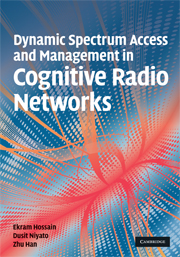1 - Wireless communications systems
from Part I - Introduction
Published online by Cambridge University Press: 26 February 2010
Summary
Wireless communications technology has become a key element in modern society. In our daily life, devices such as garage door openers, TV remote controllers, cellular phones, personal digital assistants (PDAs), and satellite TV receivers are based on wireless communications technology. Today the total number of users subscribing to cellular wireless services have surpassed the number of users subscribing to the wired telephone services. Besides cellular wireless technology, cordless phones, wireless local area networks (WLANs), and satellites are being extensively used for voice- as well as data-oriented communications applications and entertainment services.
In 1895, Guglielmo Marconi demonstrated the feasibility of wireless communications by using electromagnetic waves. In 1906, the first radio broadcast was done by Reginald Fessenden to transmit music and voice over the air. In 1907, the commercial trans-Atlantic wireless transmission was launched. In 1946, the first public mobile telephone systems were introduced in several American cities. The first analog cellular system, the Nordic Mobile Telephone System (NMT), was introduced in Europe in 1981. In 1983, the first cellular wireless technology, the advanced mobile phone system (AMPS), was deployed for commercial use. During the last two decades there has been significant research and development in wireless communications technology. In fact, today it has emerged as the most flourishing branch of development in the area of telecommunications.
The various wireless communications systems available today differ in terms of data rate of transmission, geographical coverage area, transmission power, and mobility support for users.
Information
- Type
- Chapter
- Information
- Publisher: Cambridge University PressPrint publication year: 2009
Accessibility standard: Unknown
Why this information is here
This section outlines the accessibility features of this content - including support for screen readers, full keyboard navigation and high-contrast display options. This may not be relevant for you.Accessibility Information
- 1
- Cited by
